IB Physics SL (Topic D)
1/23
There's no tags or description
Looks like no tags are added yet.
Name | Mastery | Learn | Test | Matching | Spaced |
|---|
No study sessions yet.
24 Terms
Kepler’s First Law of Planetary Motion
Law of ellipses, All planets move about the Sun in elliptical orbits, having the Sun as one of the foci.
Kepler’s Second Law of Planetary Motion
Law of equal areas, a radius vector joining any planet to the Sun sweeps out equal areas in equal lengths of time.
Kepler’s Third Law of Planetary Motion
The square of the orbital period of a planet is directly proportional to the cube of the average distance of the planet to the Sun. Orbital period is in seconds and radius is in meters.
if two planets are orbiting the same star, the proportionality constant is the same for both planets
T²a/T²b = r³a/r³b
Newton’s universal law of gravitation
Every object in the Universe attracts every other object with a force that is directly proportional to the product of their masses and inversely proportional to the square of the distance between their centres. The direction of the force is along the line joining the objects.
G = gravitational constant (N*m² *kg^-2)
F = force (N)
m1 and m2 = masses of the two bodies (kg)
r = distance between the centres of the two bodies (m), center of one body to the center of other body

gravitational field
An area of space where a mass experiences a gravitational force.
Gravitational fields act at a distance.
No contact is needed for a gravitational field to act on a mass.
Gravitational fields have infinite range. Every gravitational field extends for an infinite distance. However, the field becomes very weak at large distances away from the mass that is the source of the field.
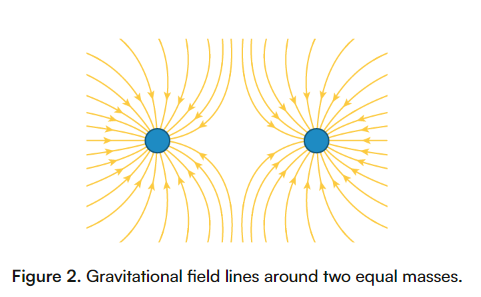
gravitational field lines
Lines that show the direction of the gravitational force acting on a mass at that point in a gravitational field.
Gravitational field lines point towards the centre of the object.
Gravitational field lines never cross each other.
closer the gravitation field lines the stronger the gravitational field, stronger the force experienced by a mass.
greater separation at greater distance.
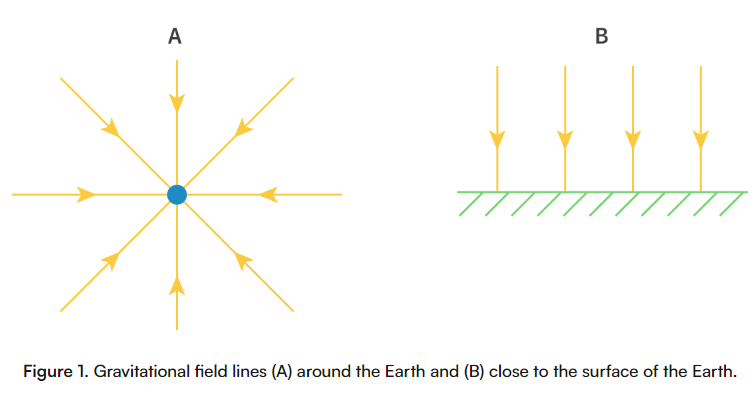

gravitational field strength
Gravitational force per unit mass experienced at a point in a gravitational field. equation is F = mg rearranged

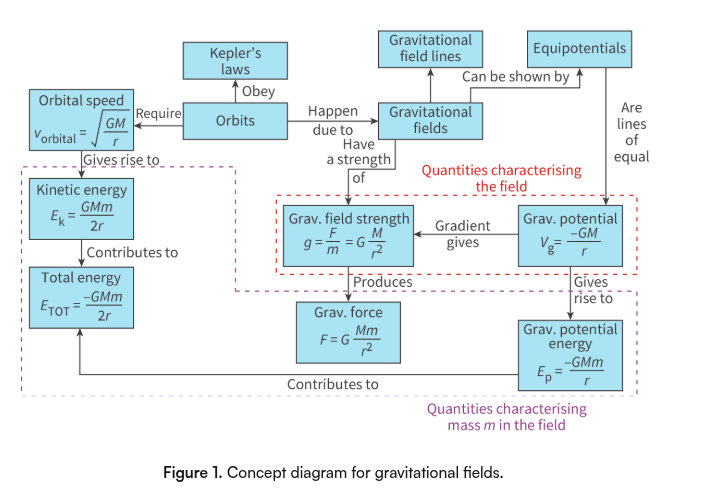
cool diagram
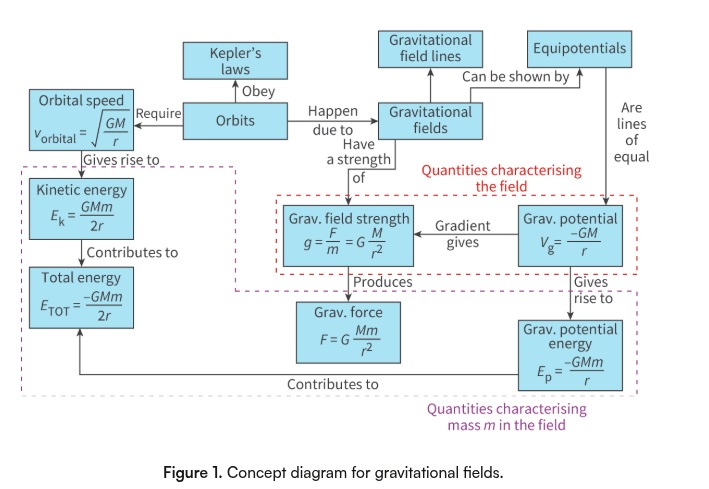
electrostatic induction
Charging a neutral object by bringing another, already charged object close to it, then removing the earth connection from the second object.
When the balloon moves away from the wall, the distribution of charge on the wall goes back to its original state, and the wall becomes neutral again.
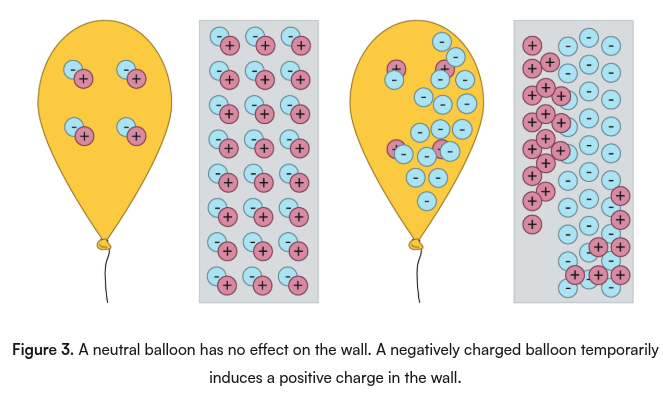
3 methods of transferring charge
friction-
there is contact and relative motion between the objects.
Negative charge transfers from one object to the other.
The two objects become charged with opposite charges.
electrostatic induction-
There is no contact between the objects.
The charge of one object is redistributed.
If this object is connected to a grounding wire, negative charges are transferred to the Earth.
The two objects become charged with opposite charges.
contact-
There is contact between the objects.
Negative charge transfers to the more positively charged object.
The two objects become charged with the same amount of charge.

Coulomb’s law
The size of the force between two charged particles is proportional to the product of their charges and inversely proportional to the square of the distance between them. A point charge is a charge whose volume is so small that it can be considered as negligible.
F = electric force (N)
k = Coulomb’s constant
q1 and q2 = the magnitudes of the point charges (C)
r = distance between the two point charges (m)
The equation also applies to spherical charges of uniform density (or with density that varies only with radius). In that case the distance r is the distance between the centres of the spheres.
The equation cannot be applied to charges of other shapes – unless the distance between the charges is so large, compared with their size, that they can be considered as points.
Coulomb’s constant
A constant of proportionality, k, which helps us calculate the force between two charged bodies.
k = Coulomb’s constant
permittivity of free space = E0

permittivity
The ease at which an electric field can pass through a substance. The higher the permittivity of the substance, the higher the resistance to the electric field. It is denoted by ε and affects the force between charges in a medium.
electric field strength
The force per unit charge experienced by an electric charge.
E = electric field strength at a certain point (N*C^-1)
F = electric force at this point (N)
q = magnitude of the test charge (C)
can also be written as E = kQ/r²
inside a sphere electric field strength = 0

electric field lines
An aid for visualising electric fields. The arrow on each field line shows direction as they point towards the negative charge and the density of the field lines indicates the field strength.
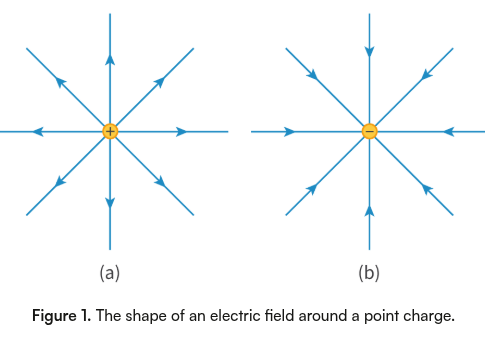
alike and unlike point charges

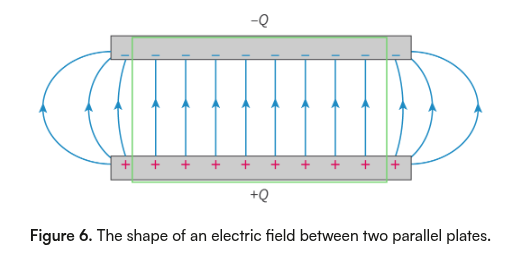
electric field strength between two parallel plates
Let us look at the area inside the green rectangle. The electric field lines are parallel to each other at equal distances from each other.
The direction of the electric field lines is from the positively charged plate to the negatively charged plate. If both plates are positive (or both negative), the field lines go from the most positive plate to the least positive plate.
The electric field lines have the same density at all points, so the electric field has the same electric field strength at all the points between the plates within this area.
A field that has a constant field strength at all points is called a uniform field.

MIllikan’s oil drop experiment
magnetic field lines
An aid for visualising magnetic fields. The arrow on each field line shows direction as they point towards the south pole and away from the north pole. The density of the field lines indicates the field strength.
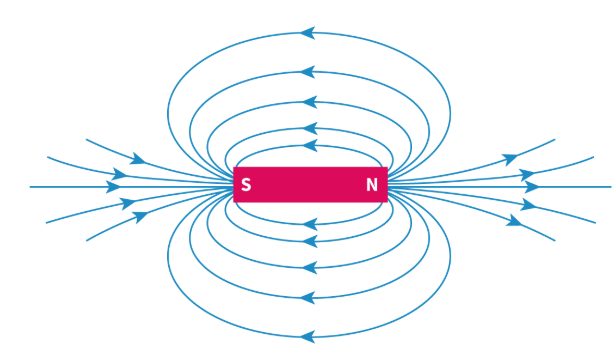
magnetic field
A region of space where a magnetic material experiences a force.
can be induced by electricity flowing in a wire.
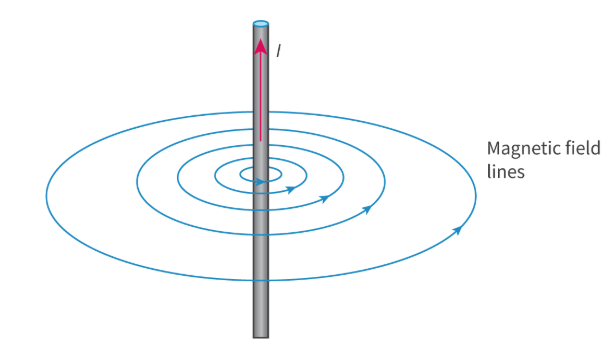
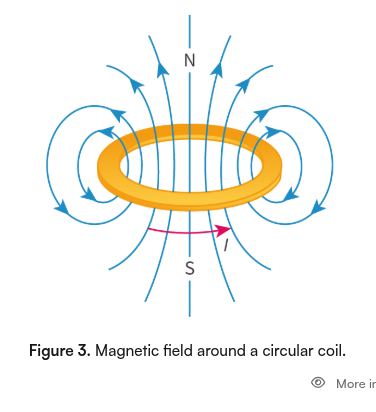
Coils and solenoids
A circular coil is a single loop of wire. When current flows in a circular coil, a magnetic field is created.
A solenoid is a coil of wire with many loops. Some solenoids have an iron core. Figure 4 shows the magnetic field lines for a solenoid with an air core.
The shape of the magnetic field is different inside and outside the solenoid. Inside the solenoid, the magnetic field is uniform. Outside the solenoid, the magnetic field strength and direction of the magnetic field vary.
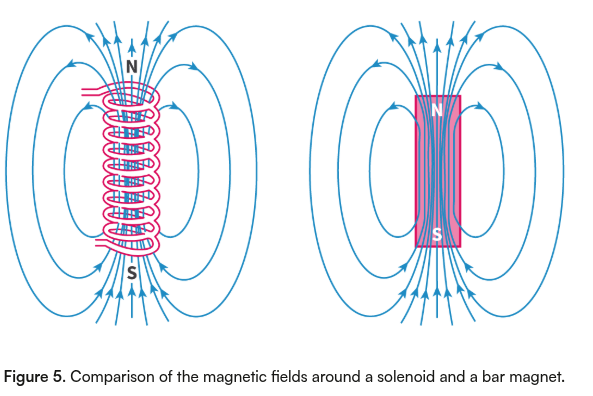
Right Hand Rule
Used to link together the force on a (positive) charge, the direction of the magnetic field present, and the force (due to movement in that magnetic field) acting on the charge during electromagnetic induction.

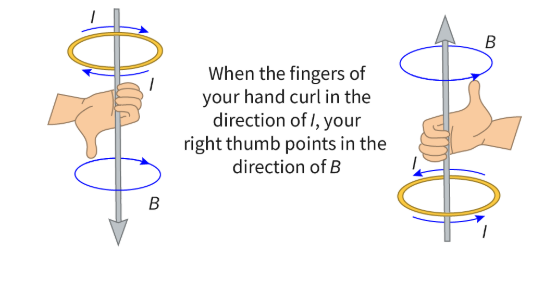
Right Hand Rule for coils and solenoids
For a circular coil, your curled fingers should be in the direction of the current. Your thumb will then show the direction of the magnetic field inside the coil
For a solenoid, your curled fingers should also be in the direction of the current. Your thumb will then show the direction of the magnetic field inside the solenoid
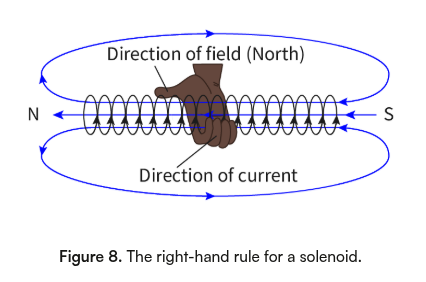
acceleration experienced by a charged particle at a point in an electric field:
If the particle is in the presence of a uniform electric field, the acceleration will be constant.
if a charged particle is placed in a non-uniform electric field, the equation for the acceleration is still valid and can be used to calculate the instantaneous acceleration
derived from E = F/q
unlike force experienced by masses in a gravetational field, which only depend on mass, accelerations experienced by charged particles in an electric field depend on mass and charge
